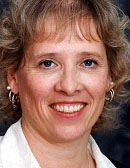
Anthony Shay
Anthony Shay earned the first Ph. D. in Dance History and Theory at the University of California, Riverside. He also holds MA degrees in anthropology from California State University, Los Angeles, folklore and mythology, and library science from UCLA. In September 1998 he was awarded the coveted James Irvine Foundation Fellowship in Dance. He is a five-time recipient of the NEA choreographic fellowship and was a NEA resident artist in La Napoule, France. As a folklorist, he conducted research in traditional music and dance for the Smithsonian Institution in Lebanon. Shay was also awarded two National Endowment for the Humanities summer scholar positions. He has contributed numerous essays, articles, and entries to the Oxford Encyclopedia of Dance, the Encyclopedia of Homosexuality, the UNESCO Encyclopedia of Contemporary Theatre, Dance Research Journal, Journal of Iranian Studies, Visual Anthropology, and the Southern California History Quarterly. He is the author of several books on the subject of dance and choreography. Anthony Shay is a dancer and choreographer with over forty years of performing and creative experience in staging and choreographing dances and music from Eastern Europe, the Middle East, North Africa, and Central Asia. After years of study in Iran, Shay created the AVAZ Dance Theatre and currently serves as choreographer and artistic director. In this period he has choreographed over 150 works for both his own company and on commission to other groups.

Barbara Sellers-Young
Barbara Sellers-Young has a BS in Sociology, MS in Dance and a Phd in Theatre from the University of Oregon. Prior to her academic career, she was a dancer/choreographer/director who performed extensively in the Pacific Northwest and at such venues as Mumokan Theatre (Kyoto, Japan) and University Theatre (Manchester, England). She has taught workshops and classes in dance and movement for international organizations such as the Association of Theatre in Higher Education and the International Federation of Theatre Research as well as at universities in England, China , and Australia. Her research projects on the intersections of dance, body, and globalization have taken place in Sudan, Egypt, Nepal, China , England, and Australia. Her articles can be found in The Journal of Popular Culture, Theatre Topics, Asian Theatre Journal, Dance Research Journal and elsewhere. She is the author of three books: Teaching Personality with Gracefulness (published in 1993), a discussion of Kanriye Fujima's life and teaching of Nihon Buyo in the United States, Breathing, Movement, Exploration, a movement text for actors (Applause Books 2001) and an edited volume on the globalization of the popular culture form, bellydance, titled Bellydance: Orientalism, Transnationalism and Harem Fantasy. (Mazda Press, 2005). Professor Sellers-Young’s research has been supported by fellowships from the American Council of Learned Societies and the Centre for Cultural Research into Risk, Charles Sturt University, Australia, as well as numerous grants, including a Davis Humanities Fellowship and a Pacific Rim Planning Grant. She served for two years as convener of the International Federation of Theatre Research Working Group: Theory and Practice of Performing and is currently a member of the executive board of the Congress on Research in Dance. She served on various university committees at UC Davis, taught as a member of the Davis Honors program and was from 2001-05 Chair of the Department Theatre and Dance.